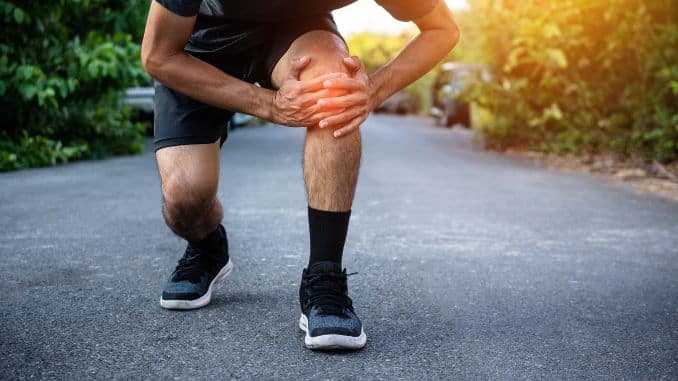Physical activity doesn't need to be complicated. Something as simple as walking can help you live a healthier life [¹]. Walking 2 miles a day may seem like a simple exercise, but its benefits are truly amazing. Not only does it boost your physical health, but it also has mental health benefits.
In this article, we will explore the numerous advantages of incorporating this daily walking routine into your life and provide you with some helpful tips for getting started. So, put on those walking shoes and get ready to experience the incredible benefits of walking 2 miles a day.
The Health Benefits of Walking
Walking is a low-impact exercise that can be enjoyed by people of all ages and fitness levels.
Whether you're looking to lose weight, improve your cardiovascular health, enhance your mental well-being, strengthen your bones, or improve your digestion, walking 2 miles a day can help you achieve these goals and more. For many, walking 2 miles fits into a daily routine without feeling overwhelming. It typically takes about 30-40 minutes, making it a convenient way to stay active.
1. Walking for Weight Loss
Walking is a fantastic exercise to lose belly fat. Additionally, walking 2 miles a day can help you burn a significant amount of calories [²], depending on your pace and body weight. Also walking briskly at a pace of 3 miles per hour can help you burn approximately 300 calories in just one hour [³]. Over time, this calorie deficit can lead to weight loss and improved body composition. Moreover, walking regularly can help boost your metabolism, making it easier to maintain a healthy weight.
2. Walking for Cardiovascular Health

Regular walking has been shown to improve cardiovascular health by reducing the risk of heart disease and stroke [⁴]. Walking 2 miles a day can help lower your blood pressure, improve cholesterol levels, and increase your overall cardiovascular fitness.
It helps strengthen your heart, improves circulation, and reduces the risk of blood clots. By making walking a daily habit, you can significantly improve your heart health and reduce the risk of developing chronic diseases.
3. Walking for Mental Well-being
Walking is beneficial for physical and mental health, aiding in weight management and contributing to a healthy lifestyle. Engaging in regular physical activity, such as walking, releases endorphins, also known as the “feel-good” hormones [⁵]. These hormones help reduce stress, anxiety, and depression while improving mood and promoting a sense of well-being.
Walking in nature or green spaces [⁶] can have an even more significant impact on mental health, as it provides a calming and rejuvenating effect. You might be shocked at how much weight you will lose by walking 2 miles a day while regaining your sanity.
4. Walking for Bone Health

Walking is a weight-bearing exercise, which means it stresses your bones, making them stronger and denser. Regular walking can help improve bone density [⁷]. By walking 2 miles a day, you can stimulate the growth of new bone tissue [⁸] and maintain healthy bones as you age. It is an excellent exercise for people of all ages, especially for older adults who are at a higher risk of bone-related issues such as osteoporosis.
5. Walking for Improved Digestion
If you often experience digestive issues like bloating, constipation, or indigestion, walking can be a simple solution. Walking helps stimulate the muscles in your abdomen [⁹], encouraging the movement of food through your digestive tract. It can also help prevent acid reflux [¹⁰] by keeping you in an upright position. By walking 2 miles a day, you can promote healthy digestion and alleviate common digestive problems.
Tips to Start Walking 2 Miles a Day
Now that you understand the incredible benefits of walking 2 miles a day, let's explore some helpful tips to get started on this journey.
1. Setting Goals and Tracking Progress

Setting goals and tracking progress are crucial components of any successful weight loss journey, including when using walking as the primary exercise. Here's how you can effectively set goals and monitor your progress while walking for weight loss:
-
- Set SMART Goals: Make sure your goals are Specific, Measurable, Achievable, Relevant, and Time-bound. For example, instead of saying “I want to lose weight by walking,” set a specific goal like “I will walk 2 miles every day for the next month.”
- Determine Your Starting Point: Before you begin, assess your current fitness level and walking ability. This will help you set realistic goals and track your progress accurately. You can measure metrics such as distance walked, time taken, and intensity level.
- Establish Long-Term and Short-Term Goals: Break down your overall weight loss goal into smaller, more manageable targets. For example, aim to walk a certain distance or duration each week or month, with the ultimate goal of achieving a specific weight loss target over time.
- Use a Fitness Tracker: Invest in a fitness tracker or use a smartphone app to monitor your walking activity. These devices can track metrics like steps taken, distance covered, calories burned, and even heart rate. Review your data regularly to see how you're progressing towards your goals.
- Track Non-Scale Victories: While weight loss is an important metric, it's not the only measure of success. Pay attention to other positive changes in your body and health, such as improved endurance, increased energy levels, better mood, and comfortable clothing fitting.
- Keep a Journal: Consider keeping a journal to record your walking sessions, including the date, distance, time, and any notes about how you felt during the walk. This can help you identify patterns, track your progress, and stay motivated.
- Celebrate Milestones: Acknowledge and celebrate your achievements along the way, whether it's reaching a certain distance, walking for a specific duration without stopping, or hitting a weight loss milestone. Rewarding yourself for your hard work can help maintain motivation and momentum.
- Adjust Your Goals as Needed: Be flexible and willing to adjust your goals based on your progress and changing circumstances. If you find that you're consistently surpassing your targets, consider setting more challenging goals. Conversely, if you encounter obstacles or setbacks, reassess your goals and make adjustments as necessary.
By setting clear, achievable goals and regularly tracking your progress, you can stay focused, motivated, and accountable throughout your walking for weight loss journey. Remember that consistency and persistence are key, and don't get discouraged by minor setbacks – every step forward, no matter how small, brings you closer to your ultimate goal.
2. Incorporating Walking into Your Daily Routine

Incorporating walking into your daily routine is an effective way to make physical activity a consistent part of your life without disrupting your schedule. Here are some practical tips for seamlessly integrating walking into your daily activities:
-
- Walk Instead of Driving: Whenever possible, choose walking over driving for short trips. For example, walk to the grocery store, pharmacy, or local errands instead of hopping in the car. This not only adds more steps to your day but also reduces your carbon footprint.
- Walk to Work: If you live within walking distance of your workplace, consider walking to work instead of commuting by car or public transportation. This is a great way to fit exercise into your day while avoiding traffic congestion and parking hassles.
- Take Walking Breaks: Instead of spending your entire lunch break sitting at your desk, take a brisk walk outside. Additionally, this can help refresh your mind, boost your energy levels, and improve productivity for the rest of the day.
- Use the Stairs: Whenever you have the option, take the stairs instead of the elevator or escalator. Climbing stairs is an excellent way to strengthen your lower body muscles and burn extra calories throughout the day.
- Schedule Walking Meetings: Instead of holding meetings in a conference room, suggest walking meetings where you and your colleagues can discuss business matters while walking outdoors. This not only promotes physical activity but also stimulates creativity and collaboration.
- Walk After Meals: Make it a habit to go for a short walk after meals, especially dinner. This can aid digestion, regulate blood sugar levels, and prevent post-meal lethargy. Aim for a leisurely stroll around the neighborhood or a nearby park.
- Set Reminders: Use alarms or reminders on your phone or smartwatch to prompt you to take short walking breaks throughout the day. Set a timer to go off every hour as a reminder to get up from your desk and move around for a few minutes.
- Park Farther Away: When running errands or attending events, park your car farther away from the entrance to increase the distance you have to walk. This simple adjustment can add up to significant extra steps over time.
By incorporating walking into your daily routine in these practical ways, you can gradually increase your physical activity levels, improve your health, and achieve your weight loss goals over time. Moreover, remember to start slowly and gradually increase the duration and intensity of your walks as your fitness improves.
3. Making Walking Enjoyable

Making walking enjoyable is key to staying motivated and consistent with your exercise routine. Here are some tips to make your walks more enjoyable:
-
- Choose Scenic Routes: Explore different walking routes that offer scenic views, such as parks, nature trails, waterfronts, or tree-lined streets. Connecting with nature can enhance the enjoyment of your walk and provide a sense of tranquility.
- Listen to Music or Podcasts: Create a playlist of your favorite upbeat songs or listen to interesting podcasts or audiobooks while walking. Music and engaging content can make the time pass quickly and distract you from any fatigue.
- Walk with a Friend or Pet: Invite a friend, family member, or neighbor to join you for a walk. Having a companion can make the experience more enjoyable, provide motivation, and make it feel like less of a chore. Alternatively, walking with your dog can be a fun way to bond with your furry friend while getting exercise together.
- Set Goals and Challenges: Make walking more exciting by setting goals or challenges for yourself. This could include increasing your walking speed, reaching a certain distance or step count, or exploring new walking routes in your area.
- Vary Your Routine: Keep your walks interesting by varying your route, pace, and terrain. Explore different neighborhoods, parks, or trails to prevent boredom and stimulate your senses.
- Practice Mindfulness: Use your walking time as an opportunity to practice mindfulness and be fully present in the moment. Pay attention to the sights, sounds, and sensations around you, and focus on the rhythm of your footsteps and breathing.
- Join Walking Groups or Events: Look for local walking groups, clubs, or organized events in your community. Participating in group walks can provide social support, accountability, and opportunities to meet new people who share your interest in walking.
- Reward Yourself: Treat yourself to small rewards or incentives for reaching milestones or sticking to your walking routine. This could be anything from enjoying a favorite snack or beverage after your walk to pampering yourself with a massage or relaxation session.
- Embrace Technology: Use fitness tracking apps or wearable devices to monitor your progress, set goals, and compete with friends or other users. The gamification aspect can add an element of fun and motivation to your walking routine.
- Be Flexible and Enjoy the Journey: Remember that walking is not just about reaching a destination or burning calories – it's also about enjoying the journey and the experience itself. Take time to appreciate the simple pleasures of walking, such as feeling the sun on your face, breathing in fresh air, and moving your body in a way that feels good.
By incorporating these tips into your walking routine, you can make your walks more enjoyable, rewarding, and sustainable for long-term health and well-being.
Safety Tips for Walking Outdoors
Whether you're exploring local parks, hiking trails, or urban streets, these safety tips will help you make the most of your outdoor walks while staying safe and prepared for any situation.
1. Plan Your Route in Advance

Before heading out, familiarize yourself with the area you'll be walking in. Additionally, research the route, trail maps, and any potential hazards or obstacles you may encounter along the way.
2. Stay Aware of Your Surroundings
While walking, keep your senses alert and be mindful of your surroundings. Stay vigilant for uneven terrain, obstacles, wildlife, or other pedestrians, especially in areas with limited visibility.
3. Wear Appropriate Footwear and Clothing
Choose comfortable, supportive footwear with good traction to prevent slips and falls. Dress appropriately for the weather conditions, wearing layers in cold weather and breathable fabrics in hot weather.
4. Stay Hydrated
Bring an adequate supply of water and snacks to stay hydrated and energized during your walk, especially on longer outings or in hot weather. Additionally, take regular breaks to rest and refuel as needed.
5. Protect Yourself from the Sun
Wear sunscreen, sunglasses, and a hat to protect your skin and eyes from harmful UV rays. Consider walking during cooler times of the day, such as early morning or late afternoon, to avoid the strongest sun exposure.
6. Carry Safety Essentials

Pack a small backpack or waist pack with essential items such as a first aid kit, mobile phone, identification, emergency contact information, whistle, flashlight, and any necessary medications.
7. Follow Trail Etiquette and Rules
Observe trail etiquette and follow posted signs and regulations while walking outdoors. Yield to other trail users, stay on designated paths, and respect wildlife and natural habitats.
8. Be Prepared for Emergencies
Familiarize yourself with basic first aid procedures and know how to respond to common outdoor emergencies such as sprains, strains, insect bites, or heat-related illnesses. Carry a fully charged mobile phone with emergency contacts programmed in.
9. Walk with a Buddy or Tell Someone Your Plans
Whenever possible, walk with a friend, family member, or pet for added safety and companionship. Additionally, if walking alone, inform someone of your route, expected return time, and any deviations from your plans.
10. Trust Your Instincts and Stay Safe
If you encounter any signs of danger, feel uncomfortable, or sense something is amiss, trust your instincts and take appropriate action to ensure your safety. It's better to err on the side of caution and modify your plans if necessary.
By following these safety tips, you can enjoy your outdoor walks with confidence along with investing in proper footwear and walking gear for comfort, safety, and performance during your walking workouts.
The Importance of Proper Footwear and Walking Gear

Whether you're strolling through the neighborhood, hiking on trails, or tackling longer distances, wearing the right shoes and gear can make a significant difference in your overall walking experience.
1. Choosing the Right Shoes
Selecting appropriate footwear is crucial for preventing injuries, providing support, and enhancing walking efficiency. Look for walking shoes that fit well, offer ample cushioning, arch support, and stability. Consider visiting a specialty shoe store for professional fitting and guidance based on your foot type and walking style.
2. Prioritizing Comfort
Comfort should be a top priority when choosing walking shoes. Additionally, ensure that your shoes feel comfortable from the moment you put them on, with no pinching, rubbing, or tightness. Test your shoes by walking around in them to ensure they provide adequate cushioning and support.
3. Considering Terrain and Conditions

Tailor your footwear choice to the terrain and weather conditions you'll be walking in. Opt for sturdy, waterproof shoes with good traction for hiking on uneven trails or walking in wet conditions. Choose lightweight, breathable shoes for urban or paved surfaces.
4. Replacing Worn-Out Shoes
Regularly inspect your walking shoes for signs of wear and tear, including worn-out treads, flattened cushioning, or visible damage. Replace your shoes as needed to maintain optimal support and performance, typically every 300-500 miles or every 6-12 months, depending on usage.
5. Wearing Proper Socks

Don't overlook the importance of wearing high-quality socks that provide cushioning, moisture-wicking, and blister prevention. Choose socks made from moisture-wicking materials like merino wool or synthetic blends to keep your feet dry and comfortable during long walks.
6. Protecting Your Feet
In addition to shoes and socks, consider other walking gear to protect your feet from potential hazards. Invest in blister prevention products like moleskin or blister pads to minimize friction and hot spots. Use toe caps or toe protectors to shield your toes from rubbing or irritation.
7. Layering Clothing
Dress appropriately for the weather conditions, layering clothing to regulate temperature and moisture. Choose moisture-wicking, breathable fabrics that allow sweat to evaporate and keep you dry during intense workouts. Wear lightweight, weather-resistant outer layers for protection against wind, rain, or sun exposure.
8. Accessorizing for Comfort and Safety

Consider additional walking gear and accessories to enhance comfort and safety. Use a hydration pack or water bottle belt to stay hydrated during long walks. Carry a lightweight backpack or waist pack to store essentials like snacks, sunscreen, and a first aid kit. Wear a hat, sunglasses, and sunscreen to protect yourself from sun exposure during outdoor walks.
Invest in high-quality shoes and gear that suit your needs and preferences, and don't hesitate to seek professional advice or assistance when selecting walking gear.
9. Overcoming Common Challenges in Walking
While walking is a simple and accessible form of exercise, it's not without its challenges. Here are some challenges and how to overcome them:
10. Weather Conditions

Inclement weather, such as rain, snow, or extreme heat, can make walking outdoors unpleasant or even unsafe. To overcome this challenge, consider walking indoors at a local mall, gym, or indoor track during poor weather conditions. Invest in weather-appropriate clothing and gear, such as waterproof jackets, insulated layers, and moisture-wicking fabrics, to stay comfortable and protected while walking outdoors.
11. Time Constraints
Busy schedules and time constraints can make it difficult to find time for walking amidst work, family, and other responsibilities. To overcome this challenge, prioritize walking by scheduling it into your daily routine, just like any other appointment or commitment. Break up your walks into shorter, more manageable sessions throughout the day, and multitask by walking during phone calls or while waiting for appointments.
12. Lack of Motivation
Maintaining motivation can be challenging, especially when faced with fatigue, boredom, or lack of progress. To overcome this challenge, set realistic goals, track your progress, and celebrate your achievements along the way. Find ways to make walking more enjoyable, such as listening to music, exploring new routes, or walking with a friend or pet. Joining a walking group or challenge can also provide accountability and support to stay motivated.
13. Monotony and Boredom
Walking the same route day after day can lead to monotony and boredom, making it harder to stay motivated. To overcome this challenge, vary your walking routine by exploring new routes, neighborhoods, or trails. Listen to music, audiobooks, or podcasts to keep your mind engaged and entertained while walking, and challenge yourself with interval training or speed drills to add variety and excitement to your workouts.
14. Injury Risk
Overuse injuries, such as shin splints, plantar fasciitis, or stress fractures, can occur when walking too much or too quickly, especially without proper footwear or form. To overcome this challenge, prioritize injury prevention by wearing supportive shoes, warming up before walking, and practicing proper technique and posture. Listen to your body and take rest days as needed to allow for recovery and prevent overtraining.
Conclusion
Walking 2 miles a day can have a profound impact on your overall health and well-being. It offers numerous benefits, including weight loss, improved cardiovascular health, enhanced mental well-being, stronger bones, and improved digestion. By setting goals, incorporating walking into your daily routine, and making it enjoyable, you can easily start and maintain a regular walking routine. So, put on those walking shoes, step outside, and start reaping the amazing benefits of walking 2 miles a day.
Ready to step into a healthier you? Lace up those shoes and commit to walking 2 miles a day! Start today, explore the benefits, and watch your physical and mental health flourish. Don't forget to check out our “10 Easy Movements for Increased Energy” to complement your walking routine. Let's walk our way to wellness together!






